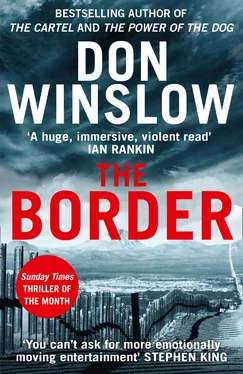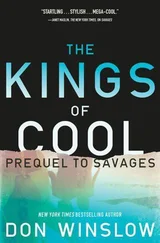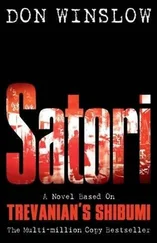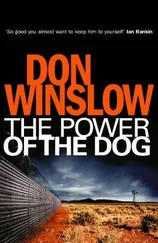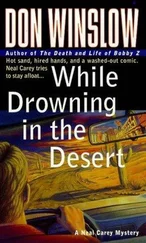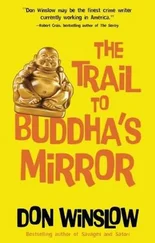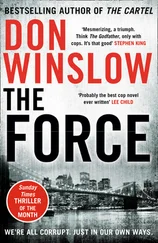Ten thousand lives so Barrera could have those bridges.
During the five years of the war between the Sinaloa and Juárez cartels, more than three hundred thousand Juarenses fled the city, leaving the population at about a million and a half.
A third of whom, Keller has read, suffer from post-traumatic stress disorder.
He’s surprised there aren’t more. At the height of the fighting, the citizens of Juárez got used to stepping over dead bodies on the sidewalk. The cartels would radio ambulance drivers to tell them which wounded they could pick up, and which they had to let die. Hospitals were attacked, as well as homeless shelters and drug treatment houses.
The city center was virtually abandoned. Once vibrant with its famous nightlife, half the city’s restaurants and a third of its bars shut their doors. Stores closed. The mayor, the town council and most of the city police moved across those bridges to El Paso.
But in the past couple of years the city had started to come back. Businesses were reopening, refugees were coming home, and the murder rate was down.
Keller knows that the violence receded for one reason.
Sinaloa won the war.
And established the Pax Sinaloa.
Well, fuck you, Adán, Keller thinks as he drives around the Plaza del Periodista, with its statue of a newsboy hawking papers.
To hell with your bridges.
And to hell with your peace.
Keller can never drive by the plaza without seeing the scattered remains of his friend Pablo.
Pablo Mora was a journalist who had defied the Zetas by persisting to write a blog that exposed narco crimes. They’d kidnapped him, tortured him to death, dismembered him and arranged the pieces of his body around the statue of the newsboy.
So many journalists murdered, Keller thinks, as the cartels realized that they needed to control not only the action, but the narrative as well.
Most of the media simply stopped covering narco news.
Which is why Pablo started his suicidal blog.
And then there was Jimena Abarca, the baker from a little town in the Juárez Valley, who had stood up against the narcos, the federales, the army, and the entire government. Went on a hunger strike and forced them to release innocent prisoners. One of Barrera’s thugs shot her nine times in the chest and face in the parking lot of her favorite Juárez restaurant.
Or Giorgio, the photojournalist beheaded for the sin of taking images of dead narcos.
Erika Valles, slaughtered and cut up like a chicken. A nineteen-year-old girl brave enough to be the only cop in a little town where narcos had killed her four predecessors.
And then, of course, Marisol.
Dr. Marisol Cisneros is the mayor of Valverde, Jimena Abarca’s town in the Juárez Valley.
She took the office after the three previous mayors had been murdered. Stayed in the job when the Zetas threatened to kill her, then again after they gunned her down in her car, putting bullets in her stomach, chest and legs, breaking her femur and two ribs, cracking a vertebra.
After weeks in the hospital and months of recuperation, Marisol came back and held a press conference. Beautifully dressed, impeccably coiffed and made up, she showed her scars—and her colostomy bag—to the media, looked straight into the camera and told the narcos, I’m going back to work and you will not stop me .
Keller has no way to account for that kind of courage.
So it makes him furious when American politicians paint all Mexicans with the broad brush of corruption. He thinks about people like Pablo Mora, Jimena Abarca, Erika Valles and Marisol Cisneros.
Not all ghosts are dead—some are shades of what might have been.
You’re a ghost yourself, he tells himself.
A ghost of yourself, existing in a half life.
You’ve come back to Mexico because you’re more at home with the dead than the living.
The highway, Carretera Federal 2, parallels the border east of Juárez. Keller can see Texas, just a few miles away, through the driver’s-side window.
It might as well be a world away.
The Mexican federal government sent the army here to restore the peace, and, if anything, the army was as brutal as the cartels. Killings actually rose during the military occupation. There used to be army checkpoints every few miles on this road, which the locals dreaded as the locations of shakedowns, extortion and arbitrary arrests that too often ended in beatings, torture and internment in a hastily built prison camp that used to exist farther up the road.
If you didn’t get killed in a cartel cross fire, you could be murdered by the soldiers.
Or just disappear.
It was on this same road that the Zetas gunned Marisol down, left her for dead at the side of the road, bleeding out. One of the reasons Keller had made his temporary alliance with Barrera was because the “Lord of the Skies” promised to keep her safe.
Keller glances into the rearview mirror just to make sure, but he knows there’s no need for them to follow him. They already know where he’s going and will know when he gets there. The cartel had halcones everywhere. Cops, taxi drivers, kids on the corners, old women in their windows, clerks behind their counters. Everyone has a cell phone these days, and everyone will pick it up to curry favor with Sinaloa.
If they want to kill me, they’ll kill me.
Or at least they’ll try.
He pulls into the little town of Valverde, twenty or so blocks arranged in a rectangle on the desert flat. The houses—the ones that survived, anyway—are mostly cinder block with a few adobes. Some of them, Keller notices, have been repainted in bright blues, reds and yellows.
But the signs of war are still there, he also notices as he drives down the broad central street. The Abarca bakery, once the social center of the town, is still an empty pile of char, the pockmarks of bullets still scar walls, and some of the buildings are still boarded up and abandoned. Thousands of people had fled the Juárez Valley during the war, some afraid, others forced by Barrera’s threats. People would wake up in the morning to find signs draped across the street from phone pole to phone pole, with lists of names, residents who were told to leave that day or be killed.
Barrera depopulated some of the towns to replace their people with his own loyalists from Sinaloa.
He literally colonized the valley.
But now the army checkpoints are gone.
The sandbagged bunker that was on the main street is gone, and a few old people sit in the gazebo in the town square enjoying the afternoon warmth, something they never would have dared to do just a couple of years ago.
And Keller notices the little tienda has reopened, so people have a place again to buy necessities.
Some people have come back to Valverde, many stay away, but the town looks like it’s making a modest recovery. Keller drives past the little clinic and pulls into the parking lot in front of town hall, a two-story cinder-block rectangle that houses what’s left of the town government.
He parks the car and walks up the exterior staircase to the mayor’s office.
Marisol sits behind her desk, her cane hooked over the arm of her chair. Poring over papers, she doesn’t notice Keller.
Her beauty stops his heart.
She’s wearing a simple blue dress and her black hair is pulled back into a severe chignon, setting off her high cheekbones and dark eyes.
He knows that he’ll never stop loving her.
Marisol looks up, sees him, and smiles. “Arturo.”
She grabs her cane and starts to get up. Getting in and out of chairs is still hard for her and Keller notices the slight wince as she pushes herself up. The cut of her dress hides the colostomy bag, an enduring gift from the round that clipped her small intestine.
Читать дальше
